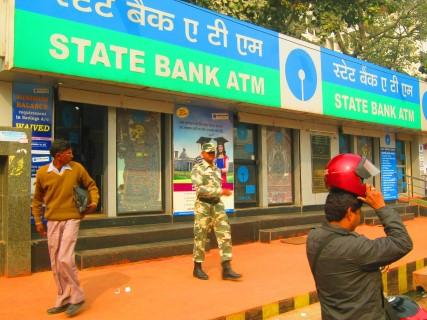
Pressures on India's public banks to remain despite the USD3.4bn capital injection
Indian banks will need USD90bn in total additional capital to meet Basel III requirements.
India's decision - announced on 19 July 2016 - to inject INR229bn (USD3.4bn) of capital into 13 public sector banks, including Punjab National Bank, State Bank of India and Bank of India, is supportive of the credit profiles of these lenders, says Fitch Ratings.
That said, this step - on its own - is unlikely to address the pressures on the system driven by economic growth in light of the significant asset quality pressures and weak profitability prospects of these banks. Fitch estimates Indian banks will need USD90bn in total additional capital - most of which will be accounted for by the public banks - to meet Basel III requirements by 2019.
Here's more from Fitch Ratings:
The 19 July capital plan frontloads a significant part of the INR250bn (USD3.7bn) in fresh equity capital that had been budgeted by the government for public sector banks this fiscal year (ending 31 March 2017). Banks other than the 13 in the announcement will need to source additional capital.
Fitch believes pressures on public bank credit profiles will remain, and more capital than the INR700bn (USD10.4bn) earmarked through to FYE19 will be needed from the government to restore market confidence and position the sector for long-term growth.
Losses at public-sector banks in the second half of the fiscal year ending March 2016 were double the government's capital injection in FY16, and eroded the equivalent of nearly 15% of end-FY15 capital. This caused loan-book contraction at many public banks, which brought sector-wide credit growth to below 10% in FYE16, the lowest increase in a decade.
Earlier this month, Fitch revised the sector outlook for Indian banks to negative from stable in part due to the rapid accumulation of stressed assets that have outpaced capital replenishment. The negative outlook indicates that bank credit profiles will remain under pressure unless addressed through significant capital injections.
Fitch maintains that, while NPLs are near a peak, asset quality could deteriorate further through the next 18 months, exacerbated by public sector banks exposure to stressed sectors, the challenging resolution process for stressed assets and delayed recognition of problem loans by banks.
Weak earnings linked to low loan growth and high credit costs will add to these challenges, and continue to make it difficult for public sector banks to access additional capital from sources other than the government. Challenges with market access could add to the risks that the government will need to be the main source of new equity capital to these banks.
The market currently values almost all of the listed public banks at well below book value. Without improved market access or further additional capital from the government, pressures on public banks' viability ratings will remain, and continue to act as a key driver for Fitch's sector outlook.























 Advertise
Advertise










